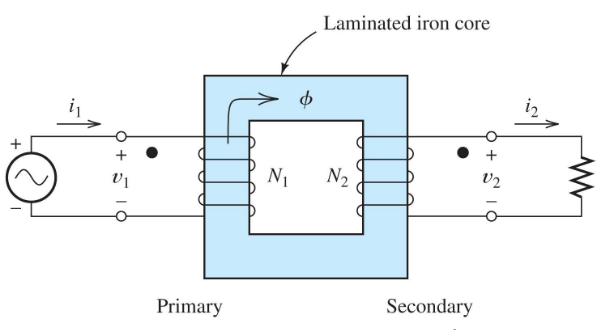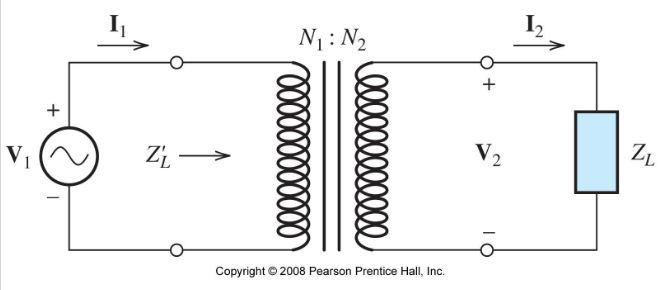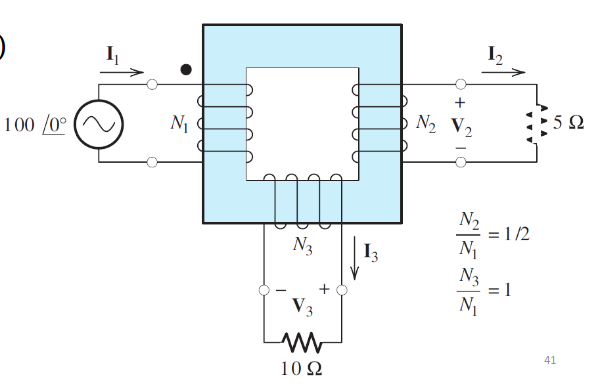Transformers
What is an Ideal Transformer?
An ideal transformer is a theoretical transformer with perfect characteristics:
- No copper losses in the windings (zero resistance)
- No leakage flux (all flux links both windings)
- Zero reluctance in the core (infinite permeability)
- No core losses (no eddy current or hysteresis losses)

Basic Transformer Equations
Voltage Relationships
For an ideal transformer, the voltage relationship is:
Where:
= Primary voltage = Secondary voltage = Number of turns in primary = Number of turns in secondary = Turns ratio
Instantaneous Voltages
For sinusoidal excitation:
Transformer as Coupled Circuits
MMF (Magnetomotive Force) Balance
The currents
For an ideal transformer with zero reluctance (
Therefore:
Current Relationship
The current ratio is inverse to the voltage ratio.
Power in an Ideal Transformer
Power Conservation
In an ideal transformer, no power is lost:
Since
This confirms our voltage and current relationships.
Impedance Transformation
Referred Impedance
An impedance
Where:

Multi-Winding Transformers
Three-Winding Example
For a transformer with three windings:
Voltage relationships:
MMF balance:
Current relationship:

Polarity and Dot Convention
Dot Notation Rules
- Voltage polarities: When the dotted terminals are both positive (or both negative), the voltages are in phase
- Current directions: Currents entering dotted terminals produce MMFs in the same direction
- Opposing MMFs: For transformer action, currents should enter opposite dot polarities
Practical Example Problem
Given: Transformer with
Solution:
- Secondary voltage:
- Secondary current:
- Primary current:
- Power delivered:
Real vs Ideal Transformers
Transition to Real Transformers
Real transformers are modeled as mutually coupled coils with:
Where:
= Self inductances = Mutual inductance = Coupling coefficient
Equivalent Circuit Elements
- Leakage inductances:
, - Magnetizing inductance:

Key Takeaways
- Perfect transformation: Ideal transformers provide perfect voltage and current transformation
- Power conservation: No losses in ideal transformers
- Impedance scaling: Impedances transform by the square of turns ratio
- MMF balance: Sum of ampere-turns equals zero
- Polarity matters: Dot convention determines phase relationships